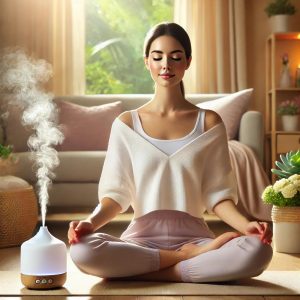Popular and Interesting Essential Oil Blends in Aromatherapy
 Aromatherapy, the practice of using essential oils for therapeutic benefits, has gained widespread popularity due to its potential to enhance physical and emotional well-being. Essential oils, extracted from various parts of plants, are used in different combinations to achieve specific effects. This article explores some of the most popular and interesting essential oil blends, their benefits, and the various methods of using them in aromatherapy.
Aromatherapy, the practice of using essential oils for therapeutic benefits, has gained widespread popularity due to its potential to enhance physical and emotional well-being. Essential oils, extracted from various parts of plants, are used in different combinations to achieve specific effects. This article explores some of the most popular and interesting essential oil blends, their benefits, and the various methods of using them in aromatherapy.
Popular Essential Oil Blends and Their Benefits
- Lavender and Peppermint:
- Benefits: This combination is known for its calming and cooling effects. Lavender helps to reduce stress and anxiety, while peppermint invigorates and relieves headaches.
- Uses: Ideal for use in diffusers, topical applications (diluted in a carrier oil), and bath soaks.
- Eucalyptus and Tea Tree:
- Benefits: Both oils have strong antimicrobial properties. Eucalyptus helps to clear respiratory pathways, while tea tree oil is effective against bacteria, viruses, and fungi.
- Uses: Suitable for steam inhalation, diffusers, and as an ingredient in homemade cleaning products.
- Lemon and Rosemary:
- Benefits: Lemon oil is uplifting and cleansing, and rosemary is known for its ability to improve concentration and memory. Together, they create a refreshing and stimulating atmosphere.
- Uses: Perfect for diffusers, room sprays, and as an addition to homemade shampoos for a refreshing scent.
- Frankincense and Myrrh:
- Benefits: Historically significant, this blend is used for its grounding and meditative properties. Frankincense promotes relaxation and spiritual connectedness, while myrrh supports skin health and emotional balance.
- Uses: Commonly used in diffusers, meditation practices, and skin care formulations (diluted).
- Orange and Cinnamon:
- Benefits: Orange oil is cheerful and uplifting, while cinnamon is warming and comforting. This combination is popular during the colder months for creating a cozy atmosphere.
- Uses: Ideal for diffusers, room sprays, and in bath salts for a warming effect.
- Chamomile and Ylang-Ylang:
- Benefits: Chamomile is soothing and helps to reduce anxiety, while ylang-ylang has calming and aphrodisiac properties. Together, they promote relaxation and emotional well-being.
- Uses: Suitable for diffusers, massage oils (diluted in a carrier oil), and bedtime rituals.
Methods of Using Essential Oils in Aromatherapy
- Diffusion:
- Description: Essential oils are dispersed into the air using a diffuser, creating an aromatic environment.
- Benefits: Helps to purify the air, improve mood, and support respiratory health.
- Types of Diffusers: Ultrasonic, nebulizing, heat, and evaporative diffusers.
- Topical Application:
- Description: Essential oils are applied directly to the skin, usually diluted in a carrier oil (such as almond, jojoba, or coconut oil).
- Benefits: Can target specific areas of the body, providing localized relief and skin benefits.
- Common Uses: Massage oils, lotions, balms, and roll-on blends.
- Inhalation:
- Description: Directly inhaling essential oils, either from a bottle, cotton ball, or steam inhalation method.
- Benefits: Provides immediate effects for respiratory issues, stress relief, and mental clarity.
- Methods: Steam inhalation, personal inhalers, and direct inhalation from a tissue.
- Baths:
- Description: Adding essential oils to bathwater, often mixed with Epsom salts or a carrier oil to disperse the oils evenly.
- Benefits: Combines the benefits of inhalation and topical application, promoting relaxation and skin health.
- Tips: Use a few drops of essential oils mixed with a carrier or dispersant to avoid skin irritation.
- Compresses:
- Description: Soaking a cloth in water mixed with essential oils and applying it to the body.
- Benefits: Provides targeted relief for sore muscles, injuries, and skin conditions.
- Types: Hot compresses for relaxation and pain relief, cold compresses for reducing inflammation and swelling.
Aromatherapy offers a versatile and effective way to enhance well-being using natural essential oils. Popular blends such as lavender and peppermint, eucalyptus and tea tree, and frankincense and myrrh provide a wide range of benefits, from relaxation and improved focus to antimicrobial and respiratory support. Various methods, including diffusion, topical application, inhalation, baths, and compresses, allow for tailored use of essential oils to meet individual needs. Always ensure proper dilution and consult with a healthcare professional if you have any concerns or medical conditions before using essential oils.
Leave a Reply